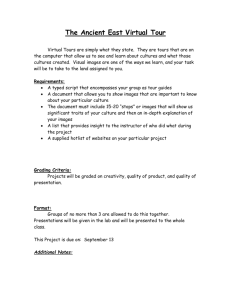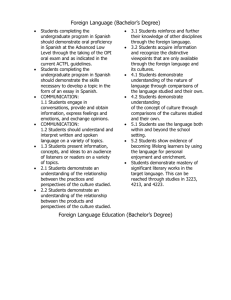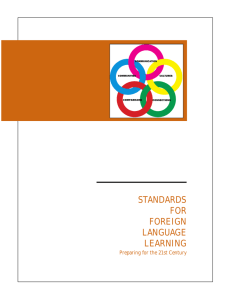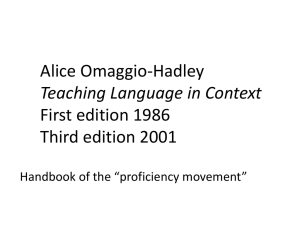What do the National Standards2
advertisement
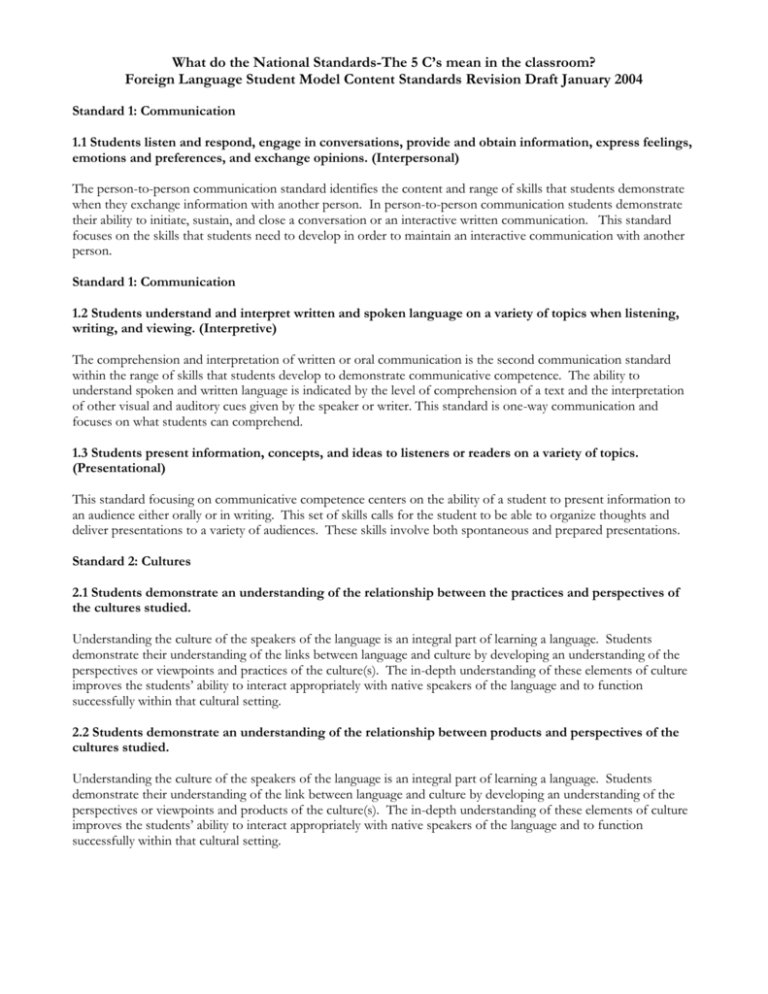
What do the National Standards-The 5 C’s mean in the classroom? Foreign Language Student Model Content Standards Revision Draft January 2004 Standard 1: Communication 1.1 Students listen and respond, engage in conversations, provide and obtain information, express feelings, emotions and preferences, and exchange opinions. (Interpersonal) The person-to-person communication standard identifies the content and range of skills that students demonstrate when they exchange information with another person. In person-to-person communication students demonstrate their ability to initiate, sustain, and close a conversation or an interactive written communication. This standard focuses on the skills that students need to develop in order to maintain an interactive communication with another person. Standard 1: Communication 1.2 Students understand and interpret written and spoken language on a variety of topics when listening, writing, and viewing. (Interpretive) The comprehension and interpretation of written or oral communication is the second communication standard within the range of skills that students develop to demonstrate communicative competence. The ability to understand spoken and written language is indicated by the level of comprehension of a text and the interpretation of other visual and auditory cues given by the speaker or writer. This standard is one-way communication and focuses on what students can comprehend. 1.3 Students present information, concepts, and ideas to listeners or readers on a variety of topics. (Presentational) This standard focusing on communicative competence centers on the ability of a student to present information to an audience either orally or in writing. This set of skills calls for the student to be able to organize thoughts and deliver presentations to a variety of audiences. These skills involve both spontaneous and prepared presentations. Standard 2: Cultures 2.1 Students demonstrate an understanding of the relationship between the practices and perspectives of the cultures studied. Understanding the culture of the speakers of the language is an integral part of learning a language. Students demonstrate their understanding of the links between language and culture by developing an understanding of the perspectives or viewpoints and practices of the culture(s). The in-depth understanding of these elements of culture improves the students’ ability to interact appropriately with native speakers of the language and to function successfully within that cultural setting. 2.2 Students demonstrate an understanding of the relationship between products and perspectives of the cultures studied. Understanding the culture of the speakers of the language is an integral part of learning a language. Students demonstrate their understanding of the link between language and culture by developing an understanding of the perspectives or viewpoints and products of the culture(s). The in-depth understanding of these elements of culture improves the students’ ability to interact appropriately with native speakers of the language and to function successfully within that cultural setting. Standard 3: Connections 3.1 Students reinforce and further their knowledge of other disciplines through the foreign language. The topics addressed in the foreign language classroom provide an opportunity for students to connect information about the language and its culture(s) they are learning with concepts studied in other subject areas. This reinforcement of curricular concepts increases students’ in-depth understanding of the total curriculum. 3.2 Students acquire information and recognize the distinctive viewpoints that are only available through the foreign language and its cultures. Students are able to enhance their knowledge of other subject areas by accessing additional information available to them in the foreign language. This enhancement of curricular concepts increases students’ in-depth understanding of the total curriculum. Standard 4: Comparisons 4.1 Students demonstrate understanding of the nature of language through comparisons of the language studied and their own. The process of language learning causes students to reflect on their own language in a way that increases their understanding of the nature of language in general and of elements of their native language and culture. Students increase their own skills in their native language as they make comparisons between the foreign language and their own. The insight students develop into the way their own culture is reflected in language helps them increase their awareness and openness to people who speak other languages and have different world views. 4.2 Students demonstrate understanding of the concept of culture through comparisons of the cultures studied and their own. The insight students develop into their own culture helps them to increase their awareness and openness to people who speak other languages and who may view the world from a different perspective. Standard 5: Communities 5.1 Students use the language both within and beyond the school setting by using the language for personal enjoyment and enrichment. Knowledge of the foreign language and its cultures is enhanced for students when they have the opportunity to apply their skills and knowledge beyond the classroom. This application can take many forms, from corresponding with a native speaker of the language to visiting places in the community where the language and culture are prominent. Within Colorado there are many situations in which students can make these connections: ethnic populations within the local community, foreign-owned businesses that have offices and factories in many parts of the state, and numerous resources available through the Internet and other media. It is the practical and personal application of their language skills that motivates students to continue their language study, leading to life-long interest in participating in the world community.
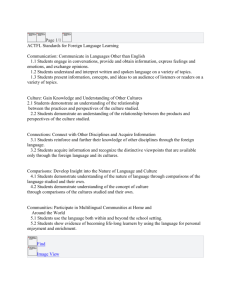
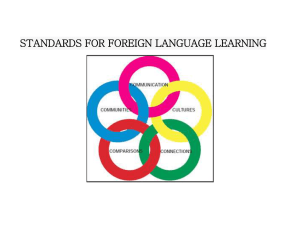
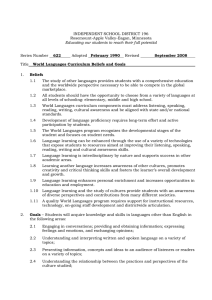
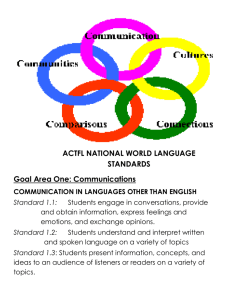
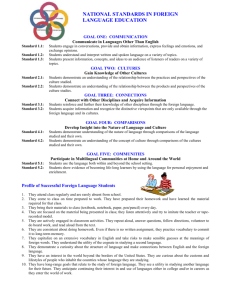
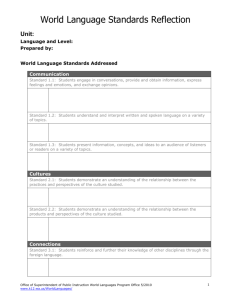
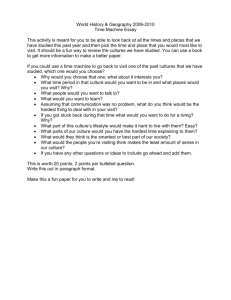
![Spanish I TEKS provide and obtain information.[1.A]](http://s2.studylib.net/store/data/015573164_1-84ce21ffed7430f5accef7e218a0e844-300x300.png)
